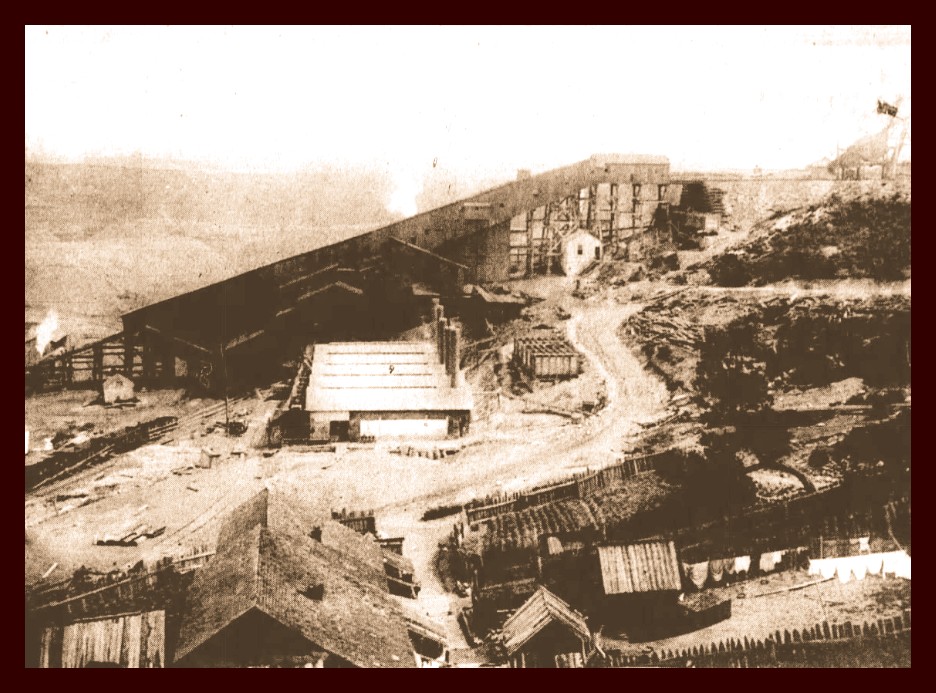An 1890 view of the Knickerbocker Breaker and power house. Note how close the colliery patch houses are to the operation.
From a series of articles that appeared in the Pottsville Republican and Herald in 1997:
The Knickerbocker Colliery was located northwest of Mahanoy City on the west side of Waste House Run.
The colliery was opened by a water-level tunnel driven 130 feet northwest to the Primrose Vein by Fowler & Huhn in 1861. In 1866, it was mined 1,000 feet westward.
The first coal shipment of 230 tons was made in 1864 and 27,602 tons in 1865. The cost of developing the colliery was $75,000.
Fowler & Huhn continued mining the tunnel level to 1865, when the Knickerbocker Coal Company was organized and a second water-level tunnel was driven 550 feet north to the Skidmore Vein, intersecting the Top-Split Mammoth at 200 feet and the Mammoth and Skidmore Vein at 550 feet.
In 1869, the Knickerbocker Coal Company sank the slope 490 feet on the South Dip Holmes Vein, driving gangways east and west. In 1870, the shipments from the colliery were made over the Little Schuylkill Railroad. Previously, coal was shipped via the Lehigh & Mahanoy railroad.
The Knickerbocker Coal Company continued operating to 1873, when the Philadelphia & Reading Coal & Iron Company came in possession and extended the gangways.
In 1878, it tunneled from the Holmes Slope level 530 feet to the Mammoth Vein.
In 1882, it extended the water-level tunnel 280 feet to the Buck Mountain Vein, a total length of 930 feet, which increased the production of the colliery.
The company expended $225,000 to make these improvements.
In 1884, it sank the Top-Split Mammoth Slope and, in 1891, extended it to 362 feet below the old drift level, a total of 864 feet from the surface.
In 1893, a tender slope was sunk on the Top Split Vein to the level of the No. 4 Slope.
In 1895, the Philadelphia & Reading Coal & Iron Company reopened the old abandoned Barrey Colliery and extended the Barrey Tunnel north to the Buck Mountain Vein. During the same year, it sank a new slope on the Holmes Vein, 1,500 feet west of the old slope.
In 1896, miners tapped and removed the water from the old abandoned Yatesville workings and extended the Knickerbocker mining eastward through the old workings of the adjoining collieries.
The Philadelphia & Reading Coal & Iron Company continued to operate the colliery until 1909, when the breaker was destroyed by fire. At this point, the colliery became part of the Ellangowen Colliery.
Total shipments from the Knickerbocker Colliery were 7,948,487 tons as of 1922, when the tonnage was included in Ellangowen Colliery shipments.
_______________________________________________
Article by Frank Blase, Historian, Reading Anthracite Company Historical Library, Pottsville Republican & Herald, November 1, 1997. Obtained from Newspapers.com.
Corrections and additional information should be added as comments to this post.
